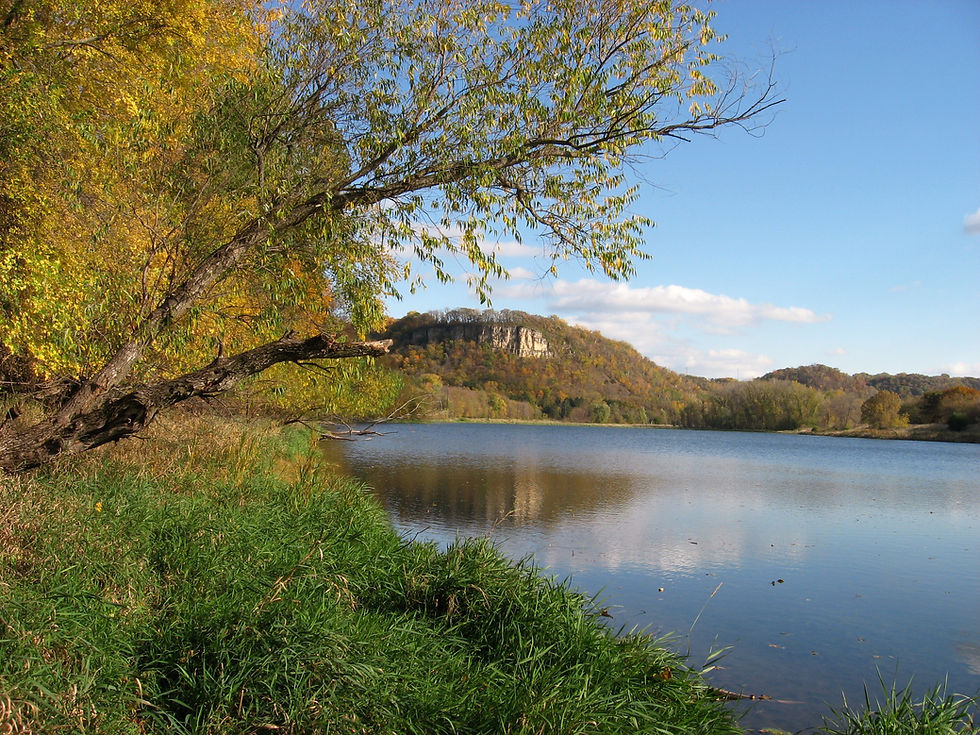Nesting Success....Not So Much
- Bruce Ause
- Jun 21, 2017
- 3 min read

Northern Flicker Hatchlings
As I reported in my May 14th post, we discovered that a pair of northern flickers had excavated a cavity for a nest in the remains of a dead apple tree in our backyard. The entrance to the cavity is 3 inches in diameter. The cavity is a little over 12 inches deep. On the 24th of May, we could hear the young hatchlings in the nest. Because they hatch without feathers and are blind, it is a couple weeks before they are capable of climbing up on the side walls of the cavity.

Young Northern Flicker
On Sunday June 18th, we noticed the young flickers were almost fully feathered and were becoming anxious to leave the nest. The nesting period for flickers is from 24 to 27 days. This is nearly double the time for the familiar robin.

Young Northern Flicker
Check out this young flicker ready to fledge and surveying it's new environment. Notice the well developed woodpecker type feet.

Northern Map Turtle
On the 9th of June, we observed a good sized northern map turtle slowly crossing the Rattlesnake Bluff bike trail near our home. No doubt it was travelling in search of a likely area to dig a hole and lay it's eggs. June happens to be the prime time for this activity.

Destroyed Turtle Nest
The next morning while riding my bike on the trail closer to Wacouta Pond, I came across a turtle nest that had been destroyed by a raccoon, fox, skunk or possibly an opossum. Most predation on turtle nests occurs within 5 days of the time the eggs are laid. As time passes, there is less scent and predators find it more difficult to locate the nest.

Snapping Turtle Photo Credit: Jeff Smith

Snapping Turtle held by Jeff Smith
Jeff found this snapping turtle trying to cross the road and stopped to help it to the other side. Jeff grew up in Wacouta and now lives in Red Wing. He remembers seeing these turtles hatching in the bay in front of his house and seeing them grow to be as big as car tires.

Northern Water Snake
In the afternoon of June 8th, I received an email from Peggy Wolner, a Wacouta neighbor living on Greens Point, requesting assistance regarding snake identification. The snake in question was in her front yard and was identified as a northern water snake.

Northern Water Snake
Northern water snakes are fairly common along this stretch of the Mississippi River and are usually observed in vegetation or swimming in the water near shore. Their diet consists of frogs, fish and small turtles.

Gray Catbird
For the past several years, a pair of gray catbirds have built a nest in the French lilac bush next to our house. This past Sunday morning four young catbirds fledged from this nest. A couple hours later and a short distance away, I noticed one of the adult catbirds on the ground and acting very strange. Upon closer examination, I discovered that it was trying to drive away a six foot long bull snake.

Bull Snake
Here is a photo of the snake in question. Several years ago, I observed a bull snake that had actually climbed an apple tree in our backyard and was feasting on some young robins. So goes the circle of life.




Comments